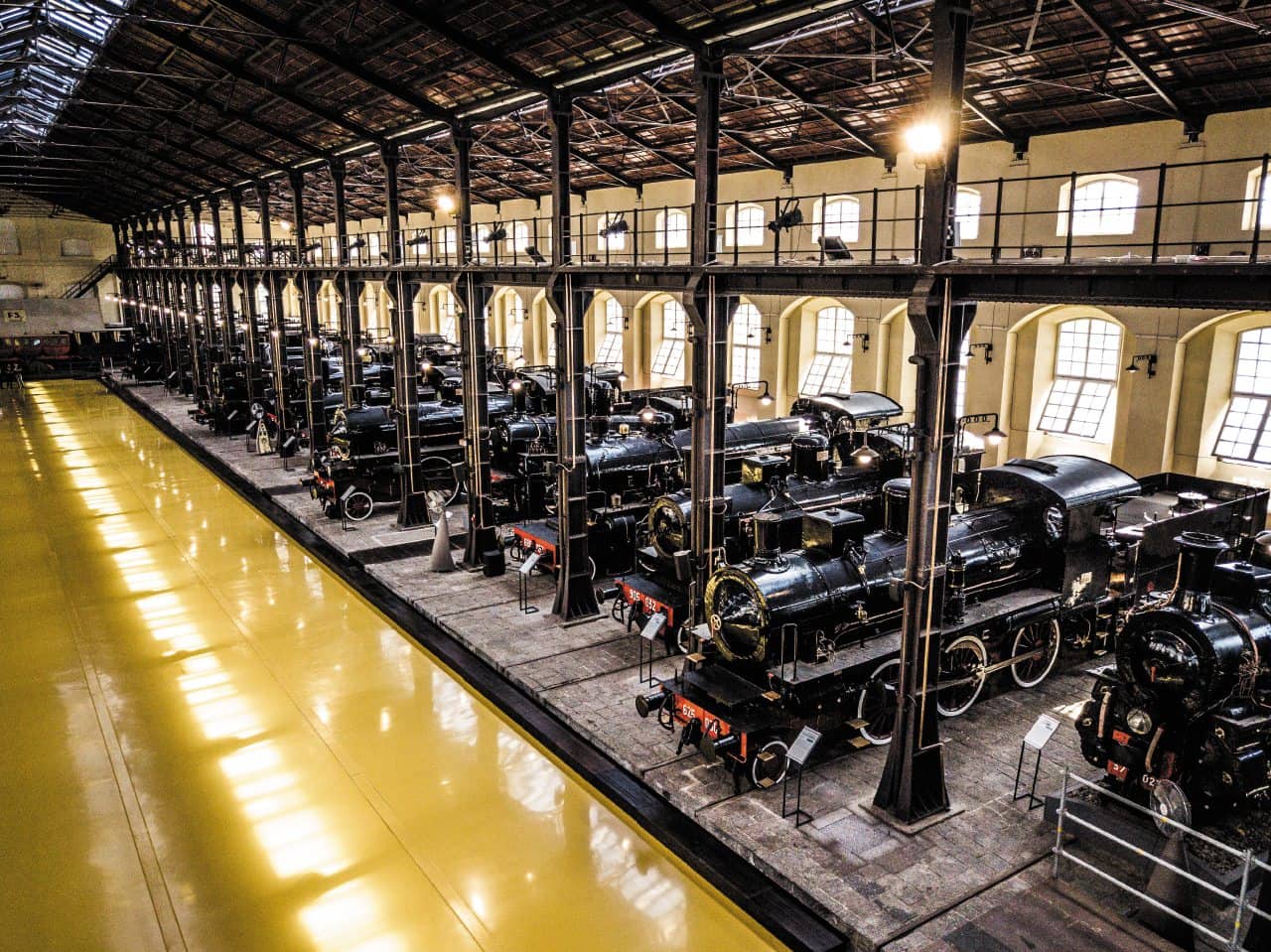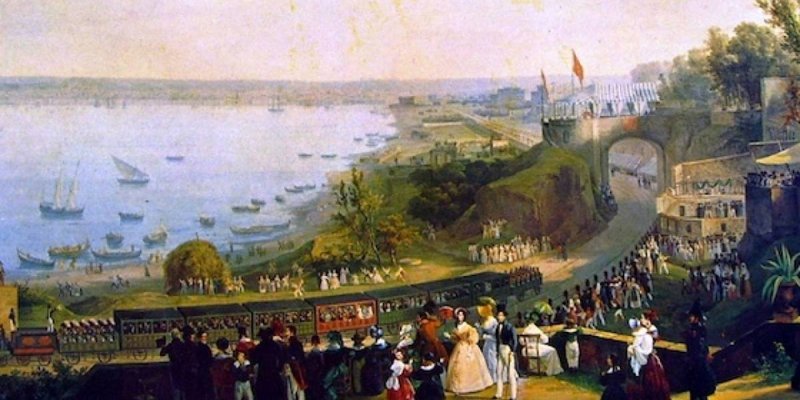History of the railway
The idea of building a railway line connecting the Vesuvian towns to the city of Naples became a reality in 1936. The work was entrusted to the engineer Armando Giuseppe Bayard de la Vigtrie, who completed the project in just three years. The steam locomotive that first ran on the railway tracks was named Vesuvius in honor of the nearby volcano. The train had a capacity of 258 passengers and could run the Naples-Portici route in just ten minutes at a speed of 50km per hour. Not bad speed for the time. The first voyage took place on 3 October 1839, when the King went to the Villa del Carrione at Granatello di Portici where the royal pavilion had been set up. There he received the builder Bayard and his team of engineers and together they took their places on the inaugural train to Naples. The locomotive left at noon on the dot at the behest of the king.
The first railway line was part of a much larger project that would connect the current capital of Campania with the cities of Pompeii, Angri, Pagani, Nocera Inferiore and Castellammare. In the years following the inauguration, the project was enlarged but was never fully completed and underwent numerous changes due to structural and bureaucratic problems. In 1860, Giuseppe Garibaldi entered Naples on the railway line inaugurated 20 years earlier. Bayard station in Naples remained active until 1943, when it was severely damaged by the bombing of Naples during the Second World War.
Many things have changed since then and over time the Naples transport system has only grown. Today, for example, the subway is equipped with stations considered works of art, among the most beautiful in the world. You can visit them all with unlimited travel on public transport with the practical Naples Pass.
How to get the Naples Pass
The birth of an industry

The importance of the Naples-Portici line lies in the beneficial effects it had on the railway industry. The inauguration of the line marked the beginning of what is now the Italian railway. In 1842, what had previously been a cannon factory became the first workshop for the construction and assembly of locomotives. This was the Officine di Pietrarsa, which in 1860 had a workforce of more than 1,200 and was the first engineering industry in Italy. Today, the workshops have become the headquarters of the Petrarsa National Railway Museum, a place of culture and industrial art where it is possible to retrace the history of the Campania and Italian railways.
King Ferdinand II was one of the monarchs who put his stamp on the industrial development of southern Italy. "King Ferdinand II of Bourbon, who reigned from 30 to 59, gave a great boost to the construction of infrastructure, especially in the capital of the Kingdom of the Two Sicilies," said scholar Alfredo Buccaro. In the 19th century, Naples became the third most important city in Europe after London and Paris.
Naples-Portici today
Today, the historic railway line is part of the regional Naples-Salerno line, while the Vesuvian towns can be reached by the Circumvesuviana. One of Campania's most popular trains for tourists who travel to Naples, Pompeii and the coast each year to see the wonders of Campania with their own eyes.
About the author
Written on 12/03/2021




Mirko Migliore
With a total length of 7.2 kilometers, Naples-Portici is Italy's first railway line. The infrastructure was inaugurated in 1839 in the presence of King Ferdinand II, ruler of what was one of the most powerful states in Europe, the Kingdom of the Two Sicilies. Let's take a look at the history of one of the masterpieces of Italian engineering.